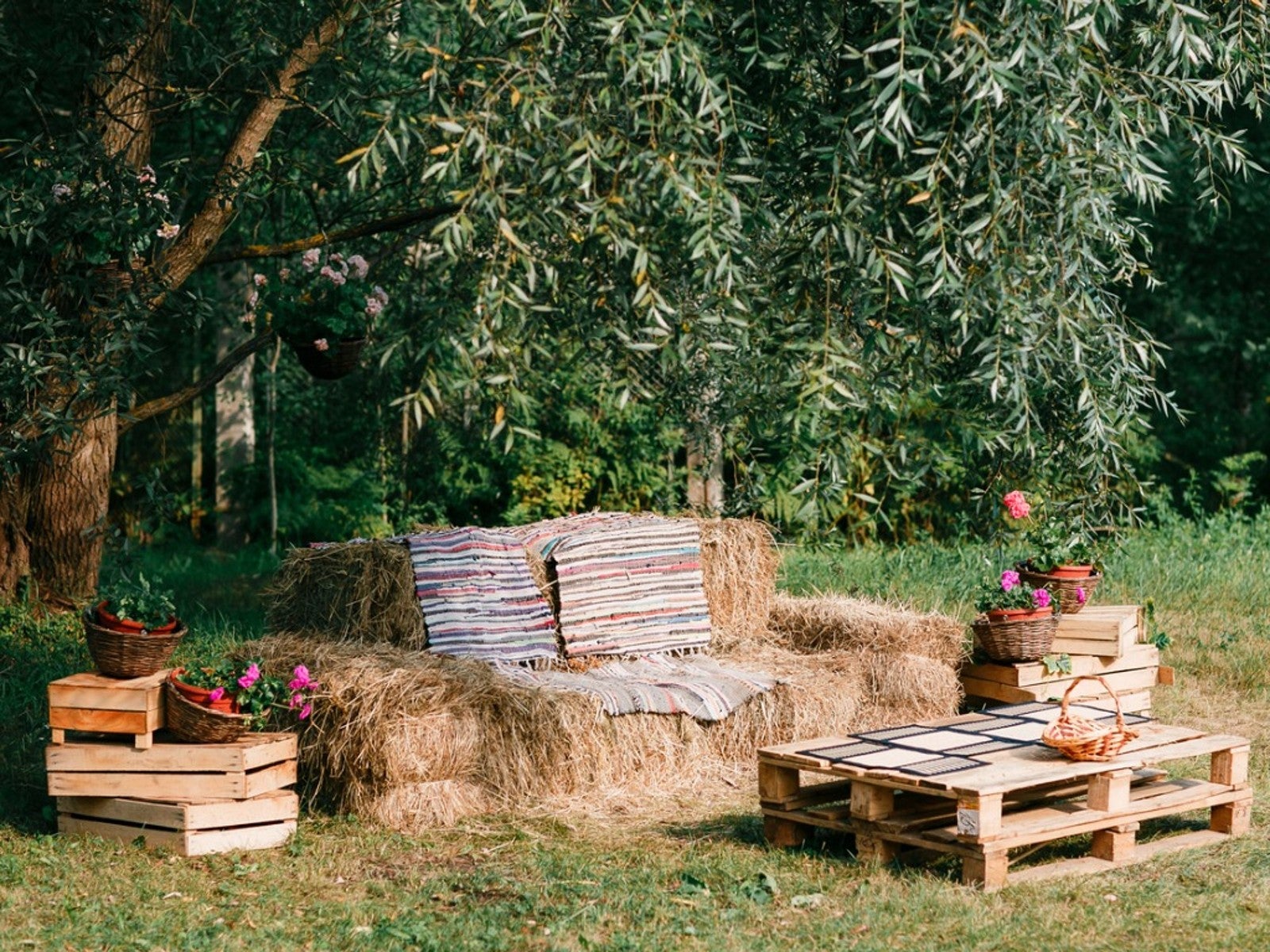Rustic Hay Bale Seating For Outdoor Entertaining


Hay and straw bale seating can be a charming alternative to traditional wooden or plastic chairs for outdoor weddings and gatherings. The cost for purchasing bale seating is often comparable to renting chairs, but hay and straw are reusable resources that add a touch of ambiance to outdoor events.
The Difference Between Hay and Straw
Although these terms are sometimes used interchangeably, hay and straw are different agricultural commodities. Straw is a byproduct of grain crops, namely wheat, oats and rye. Straw is essentially the stem of the plant after the grain head has been removed. Straw is uniform in color and the bales are composed of one type of plant.
Hay is grown and baled specifically as feed for horses, cattle, sheep and goats. Hay can be grasses, legumes or a mixture of the two. It is not uniform in color or texture. Hay containing legumes tends to have sharp woody stems while 100% grass hay can be quite fine in texture. Hay can also contain flowers or seed heads.
Although either can be used for outdoor seating, straw is preferable to hay. Both provide firm, comfortable support, but straw has more resilience and springiness than hay. Due to the inclusion of flowers and its floral scent, hay can also trigger an allergic reaction in sensitive guests.
As far as repurposing bale seating, straw can be used after the celebration to mulch garden plants and strawberries. The seeds in hay can result in undesirable weeds and is generally not recommended for mulching.
To reuse hay bale wedding seating for animal feed, it's advisable to cover the bales with a tarp until the day of the ceremony. Hay which has gotten wet or wicked up moisture from the ground will easily mold, making it unsuitable for animals to consume.
How to Use Hay and Straw as Seating
Small bales are roughly 14 by 18 inches (36 by 46 cm.) wide and typically 36 inches (91 cm.) long. A bale can weigh anywhere from 45 to 60 pounds (20 to 27 kg.). Most will seat two adults comfortably. The price per bale can vary and is dependent upon the local market, weather conditions and competition.
Gardening tips, videos, info and more delivered right to your inbox!
Sign up for the Gardening Know How newsletter today and receive a free copy of our e-book "How to Grow Delicious Tomatoes".
When using hay or straw as seating, it's advisable to cover the bales with fabric as these agricultural products can be dirty or dusty as well as scratchy on bare skin. Additionally, the sharp ends of plant stems in the bales can easily snag lace, fine fabrics and panty hose.
An array of fabrics can be used to cover the bales. Quilts lend an old-fashioned ambiance which is perfect for an outdoor, country-style wedding or event. Bed sheets or towels can be a less expensive option. Brides may also choose to purchase fabric by the bolt which matches the colors or theme of the wedding.
To keep the fabric from slipping or blowing off the bales, the covers can be spread over the bales and secured with jute or twine. Fabric can also be wrapped around 2 by 8 inch (5 by 20 cm.) wood boards and placed on top of the bales. For the ultimate in comfort, pillows or cushions can be used in place of fabric.
Making Straw or Hay Bale Furniture
In addition to bench style seating, hosts can stack bales to form a straw or hay bale couch or lounge chairs. To do this, place two or more bales on the ground with the long sides together. Next, stack bales on top of the first bales to serve as a backrest. Make sure to stack the backrest bales perpendicular to ones on the ground.
To keep the backrest from sliding, drive rebar through the center of the backrest bales down into the bales on the ground. If the bales are tight, the rebar doesn't need to be driven into the ground. Finally, use thick quilts and pillows to cover and decorate your new outdoor hay and straw bale furniture.

Laura Miller has been gardening all her life. Holding a degree in Biology, Nutrition, and Agriculture, Laura's area of expertise is vegetables, herbs, and all things edible. She lives in Ohio.